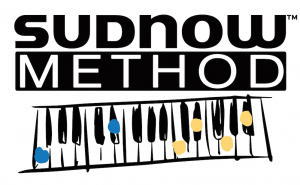THE MOST frequently asked question (not always out loud) is, “Can I really do this?” To which I have a pat answer: Yes. If you have a strong enough desire to play, the rest of this stuff will sort itself out in due time.
First, understand what we mean by “play songs”. We’re not going to teach you everything there is to know about playing piano (wouldn’t know how anyway). This is a focused approach to a narrow but incredibly fun subset of piano play: Learning to play songs with sophisticated, jazzy sounds right from the beginning.
So, peruse or search – maybe you know your question, maybe you don’t. In any case, we’ve heard them all (I think). If you can’t find what you’re looking for here, just drop us a note. (Students with questions about the Method itself should check out the forums.)
This Method is for anyone who wants to play songs well. No training is presumed. We start from the beginning. Students with prior lessons must now learn to think about the keyboard in a rather different way, to learn about chords, and playing by ear. We all start from scratch. Whether you can play a Bach Fugue or don’t know Middle C from a hole in the ground – it doesn’t matter.
Not at all. Each helps the other. Classical skills have a payoff here, and the chord handling you’ll learn helps your classical playing. Everything you do in music is related, and nothing you’re taught by this program has a bad impact on other styles of play, or vice versa.
Neither. We have students that have started playing while in their 70s. The material is directed to an adult audience – although that’s not really an age requirement. To use the program with younger children (under 14), an adult must work through it with them. Some minor adjustments for hand size are needed. Contact us if you have more specific questions.
You’ll play songs – any standards
over the past seventy five years – and you’ll play them well. In this course you start on some well known tunes, like Misty
, As Time Goes By
, Over the Rainbow
. Here you learn to handle songs well. And from that point you can learn to play any song in any style you like – from The Tennessee Waltz to Eleanor Rigby, Amazing Grace to Over the Rainbow, The Christmas Song to Summertime. If you can hum it you can play it.
Most music consists of melodies and accompanying chords. There are different ways to depict chords (groups of notes sounded at one time). The Sudnow Method uses picture of dots on piano keyboards to diagram your first songs (in a way whose results many professional musicians have commended!). Still, these ”dots” are temporary. But the diagrams have the great advantage of enabling a complete novice to learn a rich two-handed arrangement from the start. You get your hands on really wonderful sounds from the first day you begin.
When you play songs you use chord symbols and learn to arrange chords in many ways. Each time you play a tune you can vary it. That’s why when you play by ear (chord patterns!) you’re not lost if you ”leave your music at home”, the biggest complaint of people who can only read traditional notation. Learning full blown arrangements leads to a great deal of adult piano skill in a straightforward way.
The major scale (and really only that one!) is the basis for nearly all of the music we would say falls within ”the popular realm” – all the songs that we each sing from one generation to the next. Scale practice has gotten a terrible reputation, because of the image of endless drills going up and down the piano. When you learn to play by ear – which is really ”playing by chord patterns” – you have to learn to visualize major scales well: chords are built using tones of this scale. So it’s a foundation. You’ll spend only a little time actually practicing the scale, because making the music itself teaches you the needed manual techniques.
You will do lots of looking at scales. This is usually a new experience for people who have traditional piano educations. But it’s a central part of being able to work with chords easily. Yes, you’ll learn scales. But no, you won’t play them in the usual exercising way, at least not very much at all. The Sudnow Method is big on learning everything in the context of the song you’re learning, and not big at all on the idea of preparing for something by working first on something else.
That depends on the care with which you practice, more than the amount of time put in. ”Caretaking” is discussed in detail in the seminar, in practical terms. Very clear guidance is given on a proven way to increase the rate at which you learn new things at the instrument. Those with significant prior experience will often grow faster than beginners. The average newcomer will have a repertoire of a half dozen tunes, played with truly professional sounds, in six to eight months. Within a year a novice can perform at a party. Students with any good prior study may get there twice as fast or faster. In either case, it’s just a couple of months, at the most, before you’re playing your first tunes in a way that will really amaze others!

Recent Comments